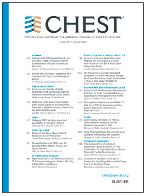 Duchenne muscular dystrophy (DMD) is the most common neuromuscular disease, beginning in childhood. It gives rise to progressive muscle degeneration leading to loss of walking ability at an average age of between 10 and 12 years and is accompanied by serious cardiorespiratory complications from adolescence onwards. Current treatment guidelines include long-term corticosteroid therapy initiated from an average age of 4 or 5 years. Its continued use after loss of walking ability is still debated, despite the fact there is a growing case in its favour. The adverse effects related to corticosteroid therapy are common, but can be controlled by appropriate management and dose adjustment.
Duchenne muscular dystrophy (DMD) is the most common neuromuscular disease, beginning in childhood. It gives rise to progressive muscle degeneration leading to loss of walking ability at an average age of between 10 and 12 years and is accompanied by serious cardiorespiratory complications from adolescence onwards. Current treatment guidelines include long-term corticosteroid therapy initiated from an average age of 4 or 5 years. Its continued use after loss of walking ability is still debated, despite the fact there is a growing case in its favour. The adverse effects related to corticosteroid therapy are common, but can be controlled by appropriate management and dose adjustment.
In an article published in May 2020, the Neuromuscular Centre at UCL in London reported the results of a retrospective study to compare changes in respiratory and cardiac function for 270 children being followed up for DMD in a single centre, depending on their corticosteroid exposure. A majority of the children were under an intermittent regimen of either prednisolone or deflazacort. Only 10% of the cohort studied were not receiving corticosteroid therapy. With a median age at inclusion of six years and a mean follow-up five and a half, it was possible to establish and compare progression curves for vital capacity and left-ventricular function. The authors were able to confirm the beneficial effect of the steroids at this stage of the disease compared to no treatment, but could not decide formally about which method of administration was superior (intermittent versus daily).
